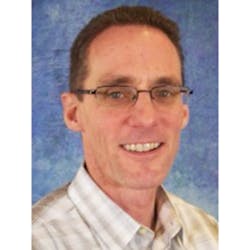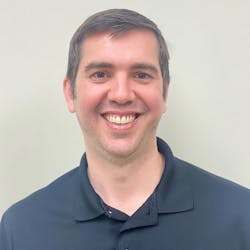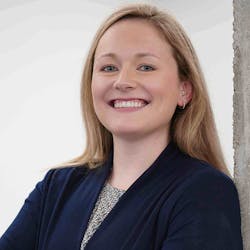There is no rest for the weary in healthcare. This expression applies not only to frontline healthcare workers but also those responsible for patient care and safety behind the scenes, in this case, Central Service/Sterile Processing & Distribution (CS/SPD) department professionals.
While pandemic-related stops and starts for elective surgeries have been highlighted all over the U.S. media, researchers from Stanford Medicine have found rates for almost every major category of surgical procedure have quickly rebounded to 2019 levels.1
At the same time, most CS/SPD departments continue to struggle with staffing shortages and high turnover rates. In many departments, a small core group of individuals responsible for reprocessing high volumes of instruments and devices are constantly pressured to train new technicians.
How can CS/SPD department teams do more with less; maintaining or even improving the quality and safety of instrument and device reprocessing? And what about the latest elephant in the room – finding resources to comply with the recently released ANSI/AAMI ST91:2021, Flexible and semi-rigid endoscope processing in health care facilities, which impacts sterile processing workflows?
CS/SPD department professionals share ways they have improved workflows despite the current challenges, and suppliers comment on equipment, supplies and solutions that can support workflow improvement initiatives.
The power of people
In a geographic region with no sterile processing schools or other forms of formal CS/SPD education, Campbell had eight open positions to fill, for which only one certified technician applied but quickly backed out because of a higher paying opportunity elsewhere.
With 30 years in the CS/SPD field, 18 of which was spent in the military, Campbell has been through the ranks of technician, lead, manager, supervisor, assistant director and now director. He understands the importance of establishing a career path for his team members where they can strive to get to the next level and have an incentive to help train others.
As a result, Campbell has gone far beyond filling vacant positions to building a stable, educated, and motivated team who could grow in the organization and in the profession. He established a CS/SPD career track for the medical center: Tech 1 (someone without certification), Tech 2 (certified technician), Tech 3 (has additional certifications), Tech 4 (CS/SPD lead).
“With this career track in place, team members can see that with more responsibility comes more money. They can visualize their worth, where they want to go and how to get there,” said Campbell.
This strategy has enabled Campbell to retain experienced CS/SPD professionals who now have the incentive to train entry-level technicians, many of whom Campbell has recruited internally from other departments in the medical center. This includes kitchen and Environmental Services (EVS) staff members with no prior sterile processing experience but the desire for change and the opportunity to grow professionally.
Educating team members on best practices from the very beginning and continuously reinforcing the standards helps drive quality, safety and efficiency, according to Campbell. He has started by educating staff on the basics of cleaning, stressing how steps skipped on the “dirty side” result in double work for staff on the “clean side.”
To help his team comply, Campbell has posted materials depicting standard workflows that break down each step of each process in each distinct area throughout the department. Although standards are important, Campbell acknowledges the importance of encouraging team members to speak up when something is not working and don’t be afraid to say, “Let’s do it differently.” He states:
“Getting everyone involved and showing how their ideas are valued and efforts are being noticed is what takes a department to the next level of success. Every department, not just the CS/SPD, needs that level of engagement so employees feel they are part of the team and have ownership of their work.”
Navigating the challenges
“To maximize output of every single SPD technician, we found that utilizing a ‘Navigator’ assignment in decontamination and assembly helps minimize the time staff need to leave their workstations, increases their productivity, and improves the reprocessing workflow,” said Kimsey. “The Navigator manages the instrument flow throughout the room bringing the prioritized work to the technician at the sink or assembly table and then takes it to the washer or sterilizer. By leveraging one person to manage the room’s flow, the rest of the team stays focused on their work.”
Simple, standardized communication
The central goal of CS/SPD operations is to support safe and effective patient care. In its Position Statement on Patient Safety, the Association of periOperative Registered Nurses (AORN) calls out the following components as vital to a safe perioperative environment: Effective communication, effective cleaning and care of instruments, developing and testing system improvements, and measuring effects and outcomes over time.2
Researchers have found SBAR to be “a reliable and validated communication tool that has shown to reduce adverse events in a hospital setting, improve communication among healthcare providers and promote patient safety.3
“This method of communication has been widely accepted for the handoff of patients from one provider to another and can be an effective tool for conveying processing steps,” said Burbank. She describes how SBAR can be used to optimize safety, quality and efficiency in a CS/SPD department:
- Situation explains when the procedure was completed, if/when precleaning was performed and what occurred after the procedure
- Background provides context on the device and patient information, along with data regarding any problems that occurred with the device during the procedure
- Assessment explains the condition of the device
- Recommendation identifies the next step in managing the device
Process standardization
The more a CS/SPD team can standardize its operations and ensure compliance, the better product they will produce with fewer errors, says Kimsey. He recommends teams document how the task should be completed, ensure staff are educated and trained to complete the task, create leadership routines that ensure and measure compliance, and provide visual tools and real-time instructions to eliminate reliance on memory.
“I often talk to Leadership Routines as foundational to any successful SPD and the same is true here,” he said. “If you take the time to standardize and train your staff, you should also implement Leadership Routines that include regular observations and rounds of staff to ensure they are following the standard work and create a culture of adherence.”
Kimsey says BLUEfin instructions for use (IFU) compliance software for decontamination is one example of bringing standard work and IFU requirements to the technician in real time. Another is the STERIS SPM Surgical Asset Tracking Software Guided Workflow functionality, which allows a CS/SPD team to breakdown complex IFUs into manageable checklists and instructions that technicians follow step by step to ensure they complete each step correctly.
“Both solutions require education and an investment in processes as well as people,” Kimsey added. “I cannot overstate the importance of taking the time to invest in your staff, provide them the training they need, and then provide positive support and feedback. So many SPDs do not even have an Educator let alone time to invest in their staff that it is no surprise our industry has such a high turnover rate that directly impacts our ability to provide the required quality product.”
Cross-functional collaboration
Because sterile processing workflows extend outside the department and into procedural areas, cross-functional collaboration with clinical teams is often critical to boosting efficacy, safety and efficiency.
Case in point: The CS/SPD team at Silver Cross Hospital in New Lenox, Ill., engaged in cross-functional collaboration with its clinical customers in an effort to improve the point of use (POU) cleaning workflow. The hospital established a multifunctional, multi-departmental team to tackle POU instrument processing to standardize the return of instrumentation from the OR and other departments to the CS/SPD after use.
“SPD’s customers were divided into ‘regular instrument users’ vs. ‘one-off occasional’ users. The rare/occasional instrument users or units were provided with bins, instructions, PPE and individual enzymatic spray to comply with AAMI requirements for proper instrument care at point of use. Regular use departments, like OR and Labor and Delivery, were provided all these items for proper instrument care at POU ahead of time in specific areas needed.
“We have instituted quality monitoring and feedback to the departments just-in-time to be sure all departments comply with the AAMI standards. All these efforts have helped streamline throughput and work processing workflows,” Tyrell added.
Tyrell notes how his department is also involved in a collaborative effort to address another issue that impacts sterile processing workflows – late loaner tray deliveries.
“Not uncommon in many SPDs, late loaner deliveries put stress on afternoon staffing and capacity to get priority items processed on -time for the next day’s cases,” said Tyrell. “Silver Cross is partnering with our loaner processing vendor, Casechek, to reinforce cutoff times and to notify vendors using on-time data where vendors are failing to comply. This continues to be a work in progress.”
Minimizing waste
“At any point of the day when work has piled up or that a piece of equipment doesn’t have a load in it, it means there is probably waste in the workflow,” said Paquet. “Wasted time, non-value-added activity, and wasted movement cause inefficiencies, quality problems, and add cost. Many times, a bottleneck at a piece of equipment isn’t the result of equipment capacity, but how the workflow is managed up and downstream of the piece of equipment.”
Paquet believes there must be a paradigm shift in the CS/SPD departments to begin viewing themselves as manufacturing departments. He recommends CS/SPD leaders learn about Lean Manufacturing principals, noting how they can start by reaching out to their state’s Manufacturing Extension organization “for assistance with reimagining their workflow and identifying activities that will have significant positive impacts in a very short period of time.”
When asked how a CS/SPD department can measure improvements in waste reduction, Paquet offers the following:
“The foundation of Lean is based on identifying and employing useful metrics that are then used to improve processes. This is linked together in the Plan Do Check Act (PDCA) cycle that ensures improvements are continuously happening. A key principle of Lean is empowering the voices of the people doing the work to transform and improve the processes.”
With regards to Lean methodology, Kimsey says CS/SPD teams can benefit from Error Proofing, or Poka-Yoke in Japanese Lean terms, which focuses on creating processes or tasks that eliminate the possibility of making a mistake or error.
“Using Guided Workflows within the SPM Tracking Software is an example of this within scope reprocessing,” said Kimsey. “The workflows are preprogrammed to follow the standardized and required steps to correctly reprocess the scope and thus guide the staff member through the process one step at a time.”
Reprocessing timing
Sometimes the question is not what to reprocess or how to reprocess but when to reprocess.
“Sterile Processing Departments can improve their procedures by correctly and accurately identifying the lot numbers. We see throughout the industry many facilities still using stamp guns which can smear or fall off in the sterilizer preventing the technicians from knowing when the tray has been sterilized. With our SteriDate system, the lot numbers will be automatically calculated, and labels will not fall off with our permanent adhesive label. Additionally, the SteriDate System removes handwritten labels and trays. By doing so, the SteriDate system removes human error. This makes it most appropriate for regulatory agencies.”
A lesson in missing instrumentation
During the height of the COVID-19 pandemic when surgical volumes decreased, the CS/SPD department team at Rush University Medical Center in Chicago took the opportunity to search through storage spaces and instrument piles to find missing instruments. While this work lowered the number of missing instruments from 2,800 to just over 1,700, the team lacked a workflow to keep the missing numbers from increasing as cases resumed.
“We started with a plan that reviewed our layout, capacity, staffing, workflows, utilization data and resources. With the help of the OR leadership, we cleaned up our SPM Surgical Asset Tracking Software database by removing obsolete items and quickly reduced the missing count by 31%.”
“We still needed to find a process to keep instruments in their trays,” Baquero continued. “Like many facilities that do complex cases with multiple set-ups, there are challenges with getting all the instruments placed back in their trays. Asking the OR to make changes to their complex processes was not reasonable when we had opportunities for improvement in SPD.”
Baquero notes how her department was filled with extra instruments: Storage rooms with old instrumentation, stuffed cabinets and drawers, and an instrument wall that was “exploding at the seams.” Her team, in collaboration with the OR, removed items that were overstocked, obsolete and damaged, donating unneeded items, labeling the instruments they kept and establishing a reordering system.
Next, they developed a “chipping” process at receipt of the case cart in decontamination:
- The CS/SPD Navigator scans the cart into the SPM database, breaks down the cart, and places “chips” of the same color/series into every tray corresponding to that OR case
- The “chips” are left in the sets through decontamination into assembly and grouped together after being washed
- The assembly Navigator passes trays to the team, keeping trays grouped according to their “chips”
- When staff are assembling the trays and encounter a missing item, they simply look into the trays with the corresponding “chips” to find the missing item
“To ensure staff fully understood the process and were able to easily follow it, we created a detailed standard work with visual aids and all staff are trained to these workflows,” said Baquero. “Our ordering process was also standardized, and our new workflows allow for easy tracking through the approval and receiving processes.”
“Changing to this workflow seemed a little too easy and we were concerned that we would not see a big change to our missing instrument woes,” Baquero continued. “But, as of March 2022, we have seen an 88% reduction in missing instruments and are planning for further reductions throughout the year.”
Baquero attributes most of the success of this process change to standardization and their leadership team holding staff accountable to the processes.
Rush University Medical Center in Chicago has outsourced its entire CS/SPD department to STERIS, with Baquero now serving as Director Clinical Operations at STERIS Instrument Management Services.
The challenge of robotics
Silver Cross Hospital is one of the highest volume facilities for Davinci procedures in the Chicagoland area. Tyrell comments on how robotic surgery poses its own unique challenges to CS/SPD workflows, stating:
“Davinci robotic arms require multiple extra steps to process them per the IFU. We took a closer look at the process and noticed backlogs in decontam. Our compacity for ultrasonic washing was holding up our process so we purchased a new ultrasonic (Getinge Triton) to grow our capacity in that area to remove the bottleneck.”
“Growth in robotics also created growth in the need for low temperature sterilization capacity,” he added. “We looked at our options and decided to diversify our modalities in low temp and complement our ASP Sterrad 100nx sterilizers with a Stryker VP4 low temp sterilizer. Most of our Davinci lenses now flow through our VP4 sterilizer along with other miscellaneous items which has removed our backlog in the low temp sterilizer area.”
Measuring workflow improvements
Tracking and measuring progress in CS/SPD workflow can help drive continuous improvement. Showing how an initiative delivered results in efficiency, quality and/or safety can also help a CS/SPD team gain leadership support for additional investments in the department.
Kimsey categorizes measurements into three categories: Outcome Measurements, Process Measurements and Waste Measurements. He says all of these can be used to measure improvements and create a continuous improvement culture.
“Outcome Measurements are the easiest and most common in that they measure the quality of the final product or service,” said Kimsey. “For most SPDs, this is the quality of the instruments sent to the OR and/or the service provided. While customer facing quality should always be measured, it is a reactive measurement that is often too late. It is much better to build in proactive measurements that help catch the issue before it reaches the Customer.”
Kimsey describes Process Measurements as those that focus on the process steps and how well a CS/SPD team performs and adheres to them. Examples of Process Measurements include compliance to standard work through audits and observations, dirty instruments caught in assembly, instrument backlog in assembly, and missing instruments.
“The concept is that if you control and improve the internal process, the outcome or product produced will be better,” Kimsey explained. “Another way to look at Process Measurements is to measure how well the internal product is ‘handed off’ between each step of the process. This includes how well the OR hands-off the dirty tray to SPD and how well decontamination hands-off the tray to assembly.”
According to Kimsey, Waste Measurements are the hardest and least used. They focus on measuring what Lean refers to as “wasted activity.”
“This includes measuring rework, returned unused items, phone calls, special deliveries, or anything that is not according to plan,” said Kimsey. “A fun way to look at this is to envision the perfect SPD and then measure what’s happening that shouldn’t!”
References
1. Mattingly AS, Rose L, Eddington HS, et al. Trends in US Surgical Procedures and Health Care System Response to Policies Curtailing Elective Surgical Operations During the COVID-19 Pandemic. JAMA Netw Open.2021;4(12):e2138038. doi:10.1001/jamanetworkopen.2021.38038
2. Position Statement on Patient Safety, AORN Journal, V115, 5, 454-457, 2022
3. Shahid, S., Thomas, S., “Situation, Background, Assessment, Recommendation (SBAR): Communication Toll for Handoff in Health Care – A Narrative Review.” Safety in Health, 4:7, 2018, Open Access
Let’s talk about ANSI/AAMI ST91:2021
There was much excitement across the industry when the long-awaited updates to ANSI/AAMI ST91:2021, Flexible and semi-rigid endoscope processing in health care facilities were released in March 2022. We asked CS/SPD professionals and suppliers for their thoughts on the impact of these changes to CS/SPD departments that reprocess a high volume of scopes, and advice on how to proceed with implementation.
Debra S. Burns, BS, CRCST, CIS, CHL, LBBP, Certified HSPA Instructor, Sterile Supply Consultant, Aesculap
“The updates to ST91 address new guidelines for cleaning, verification, drying, storing and patient safety and may require major process changes and possibly major purchases. A way to manage the change is to review the updates and evaluate the resources available to move toward compliance.
“A good place to start in managing change in sterile processing is with a comprehensive and quality training program. For example, the more challenging updates involve the high-risk scopes having different processing requirements, cleaning verification and sterilization. Enhancing the visual inspection can add quality to the current cleaning processes. As the guidelines state, endoscopes should be inspected with lighted magnification along with the cleaning verification testing.
“A recommendation for implementing and managing the changes is to prioritize the changes high on the list. ST91 does not state how soon the changes need to be adopted, but it would be best practice to have an implementation plan to provide to the surveyor in the event a visit is conducted before the changes are made.”
Kenneth Campbell, Director of Sterile Processing, Berkshire Medical Center
“There is certainly a lot of controversy around the changes. You must admit that 10 minutes is a long time to be standing somewhere blowing out a scope. With regards to the guidance on using only two sinks now - one for cleaning, one for rinsing – today’s departments are not set up that way. As for sterilizing scopes versus high level disinfection, many hospitals are not in a position to send down scopes to be sterilized so what they you do? There is a lot of conversation going on around that right now.
“The reality is that a department can’t do it all at once. Something I heard said at the 2022 HSPA Annual Conference has stuck with me, and I now say it to my team, ‘While we want a perfect department let’s start with a perfect day with no mistakes today and we will worry about tomorrow, tomorrow.’ By doing so, each day will get a little easier.”
Peter Hawryluk, Account Executive, MedVantage
“Departments should develop guidelines and protocols with their staff to ensure that all work adheres to the necessary requirements. Specifically, accurate dates for hang time should always be cross checked to make sure that the hospital standards are being met.”
Jeff Paquet, President & CEO, Mobile Medical International Corporation Solutions
“Based on our review and understanding of the standard, CS/SPD are being pushed away from manual processing, and toward high-level disinfection and sterilization of endoscopes. This means more use of low temperature sterilizers.”

Eric S. Smith, CFER, Infection Prevention & Control Specialist, Medical & Scientific Affairs, Olympus Corporation of the Americas
“For facilities that follow AAMI standards, the ST91 updates may add time to the reprocessing procedure for leak testing, drying time and cleaning verification depending on endoscope risk. Scopes that fall under the classification of delayed reprocessing will require additional steps before the normal processing cycle with which staff may not be accustomed. CS/SPD departments should make trial reprocessing runs based on the new standards to determine how the updates may impact their specific facilities.
“CS/SPD departments will need to figure out whether existing equipment and processes are sufficient to meet the new standards. A facility, for instance, may need more drying equipment to incorporate the additional reprocessing time or new equipment to track reprocessing and storage steps. Facilities may need to schedule more time between procedures to account for the longer reprocessing requirements.”
About the Author
Kara Nadeau
Senior Contributing Editor
Kara Nadeau is Sterile Processing Editor for Healthcare Purchasing News.








